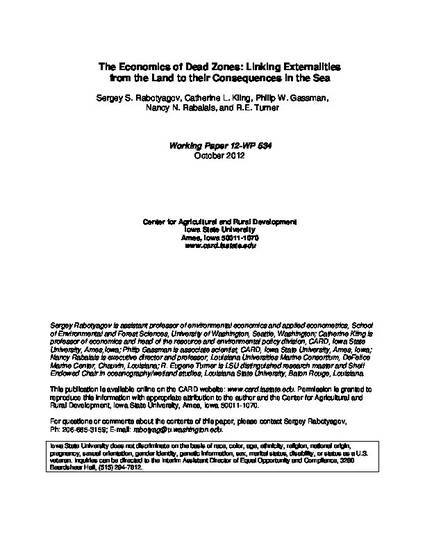
This article reviews and analyzes the issues related to worldwide hypoxic zones and the range of economic questions sorely in need of answers. We begin by describing the extent and causes of hypoxic zones worldwide, followed by a review of the evidence concerning ecological effects of hypoxic zones and their impacts on ecosystem services. We describe what is known about abatement options and cost-effective policy design, and then focus on the large seasonally recurring hypoxic zone in the Gulf of Mexico. We offer a simple econometric model to estimate the relationship between pollutants (nutrients) and the size of the hypoxic zone. This “production function” relationship suggests that both instantaneous and historical nutrient contributions affect the size of the zone. Our results support concerns that ecologists have raised about lags in the recovery of the ecosystem and confirm the importance of multiple nutrients as target pollutants. We conclude with a discussion of the types of research and cooperation across disciplines that are needed to support the development of policies to address this important ecological and economic issue.
Available at: http://works.bepress.com/catherine_kling/90/

This is a working paper of an article from Review of Environmental Economics and Policy 8 (2014): 58, doi:10.1093/reep/ret024